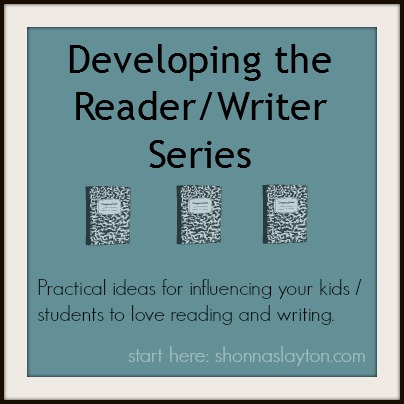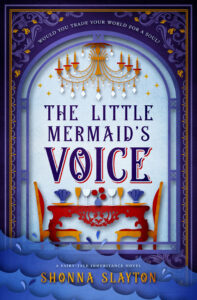I’m working my way through my teaching philosophy regarding reading and writing. Last blog I covered some of the ways we introduced our kids to books from the time they were babies, up through preschool. The most radical method involved severely limiting electronics time, which we accomplished rather painlessly using TV tickets.
Now, I’m moving on to the elementary years. We’ve got the same goal of developing a love for reading and writing in our kids. We’ve kept the same methods of maintaining a book-rich environment and limiting electronics time. But now we’ve added expectations from the kids to become greater participants in their reading and writing—guiding them on the path to become independent learners.
Learning to Read
I remember my biggest fear when starting homeschooling was the question of whether or not I could teach my kids to read. How in the world do you teach a child to read!? This task was so daunting, I figured if I could teach them to read, I could probably teach them anything.
Curriculum
On our many trips to the library I took out piles of books on childhood literacy and teaching reading. I learned about phonics, which was NOT the way I was taught and it seemed so foreign to me! But oh, did it make more sense that sight reading. If my kids could sound out individual letters and groups of letters, why they could sound out any word!
So I picked my curriculum. I ended up going with Spell to Write and Read: A Step by Step Guide to Foundational Language Arts by Wanda Sanseri using the Spalding method. Many of the charter schools in our area use Spalding. I coupled it with Cursive First to encourage continuous thought and avoid letter reversals. I have to admit, it was a slower method than other programs I looked at. If I were in a race to have my child reading before everyone else’s children, it was the wrong program. However, for creating strong, confident readers, it was the right choice for us. My kids didn’t love this curriculum, but it worked and I don’t have to buy any other spelling books as this takes them through high school. I’ve found out about other programs since I made my choice, and if I were looking for curriculum today, I’d also consider the Primary Arts of Language from the Institute for Excellence in Writing before deciding.
There are tons of websites available to help new readers. Plenty of videos. An abundance of tips and tricks online. If what you are doing is not working, you can wait, and try again later. Or you can switch up your methods. Above all else, be patient and don’t force it. Some kids just take longer to learn to read. Don’t stress out and don’t stress them out. If you think your child has a learning disability, trust your gut and check it out.
Oh, boy. This one was tough. How do you find interesting books with simple language? My son thought the standard learning-to-read books were boring. I won’t name names, but many of the popular sight-word type books were torture for him to read. He wanted action. He wanted adventure. He wanted books more like the ones I was reading aloud to him. Finally, I found the perfect book for teaching him how to read: Learn to Read Bible (Rocket Readers. Level 1, Level 2)
It had stories where things happened!
Another book
books. I think they might have also fit the bill of “more action, more adventure.”
Now, my daughter was not so picky. She like any books with animals in it. Plenty of those around!
Once they were past the learning/struggling to read stage, it was much easier to find books in the Early Reader category to satisfy everyone’s interest during our regular visits to the library.
Learning to Write
So, the children have been consuming books and information for years. It’s time for them to start producing. How can young children write well when the physical act of writing can sometimes be such a chore?
Dictation
Dictation can go two ways.
- You tell them what to write and they write it.
I know a lot of people swear by the first method. I’ve practiced more of the second. Children are highly creative and will tell you the most interesting stories. You can help them get what is in their heads, down on the paper. Some won’t have any trouble writing down their own thoughts, others, though, can’t write as fast as they think, nor can they deal with the mechanics of writing at the same time as telling a story. So let them tell you what to write, and read their story back to them. It’s a lot of fun and the resulting stories makes for great keepsakes. If your kids don’t know how to get started you can use story prompts or Rory’s Story Cubes to get their minds rolling.
There are two main ways my kids play with the Story Cubes. They roll them out and let everyone take a turn telling a story by choosing a die and adding that object to the “what happens next?” question. Or, each child goes through all the dice to tell a story to the audience.
Penmanship
This is one area I wish I would have spent more time on in the early years. We just never seemed to get into a good routine for daily practice.
One place 
So, I started using a great series of books called Draw Write Now. The kids learn how to draw simple scenes and then copy four sentences below their drawings. Love these books. Just wish I was more consistent with it.
Read Alouds
And lastly, here is one of the keys to reading that parents often let fall away when their kids start reading on their own. Don’t! Keep reading aloud to them. Choose books that are above their level so you gently draw their abilities upward. You continue to develop their attention span. You increase their vocabulary. You introduce them to worlds beyond their own and open up avenues of discussion.
This last point is so important, it is the subject of my next blog.







